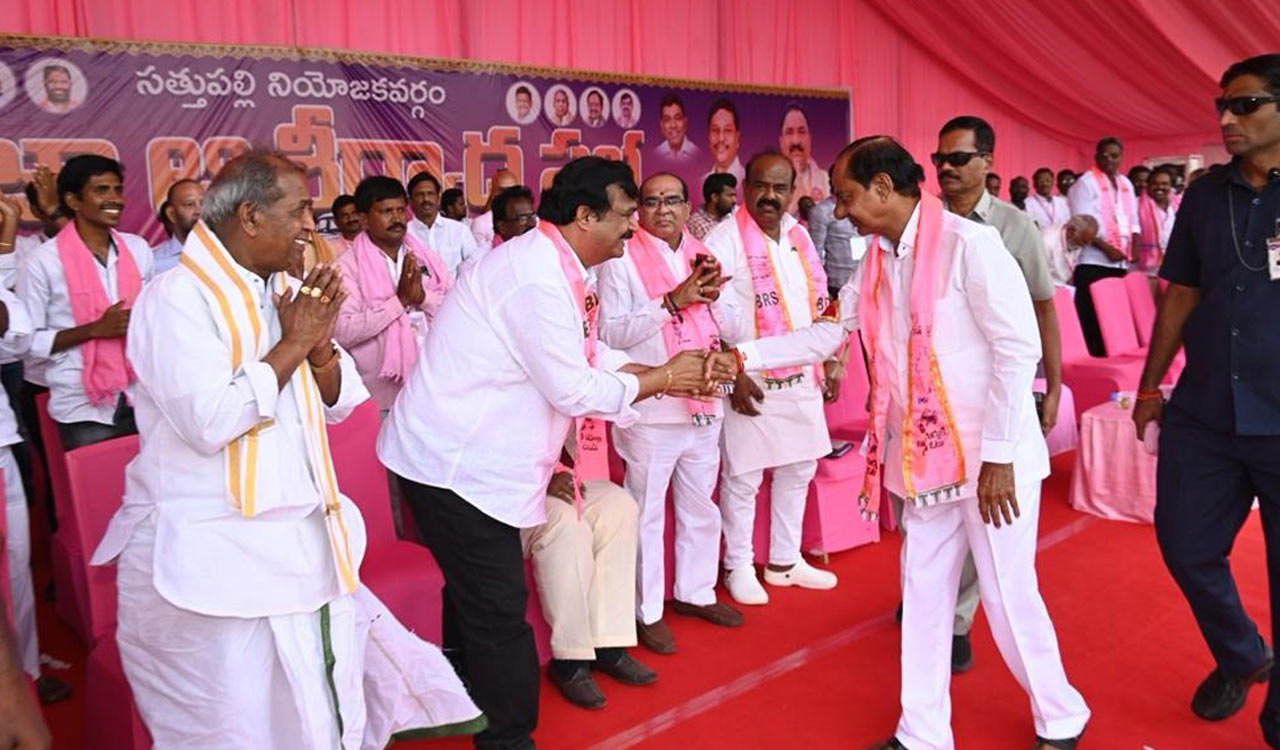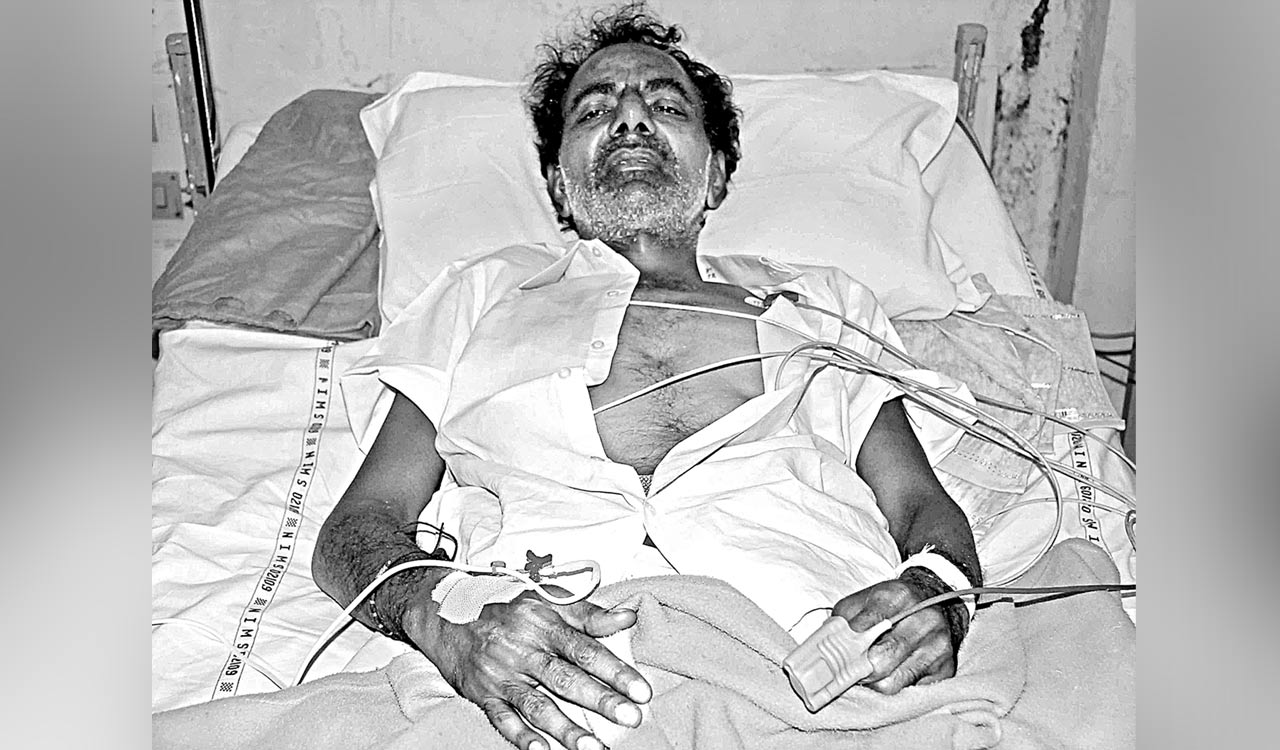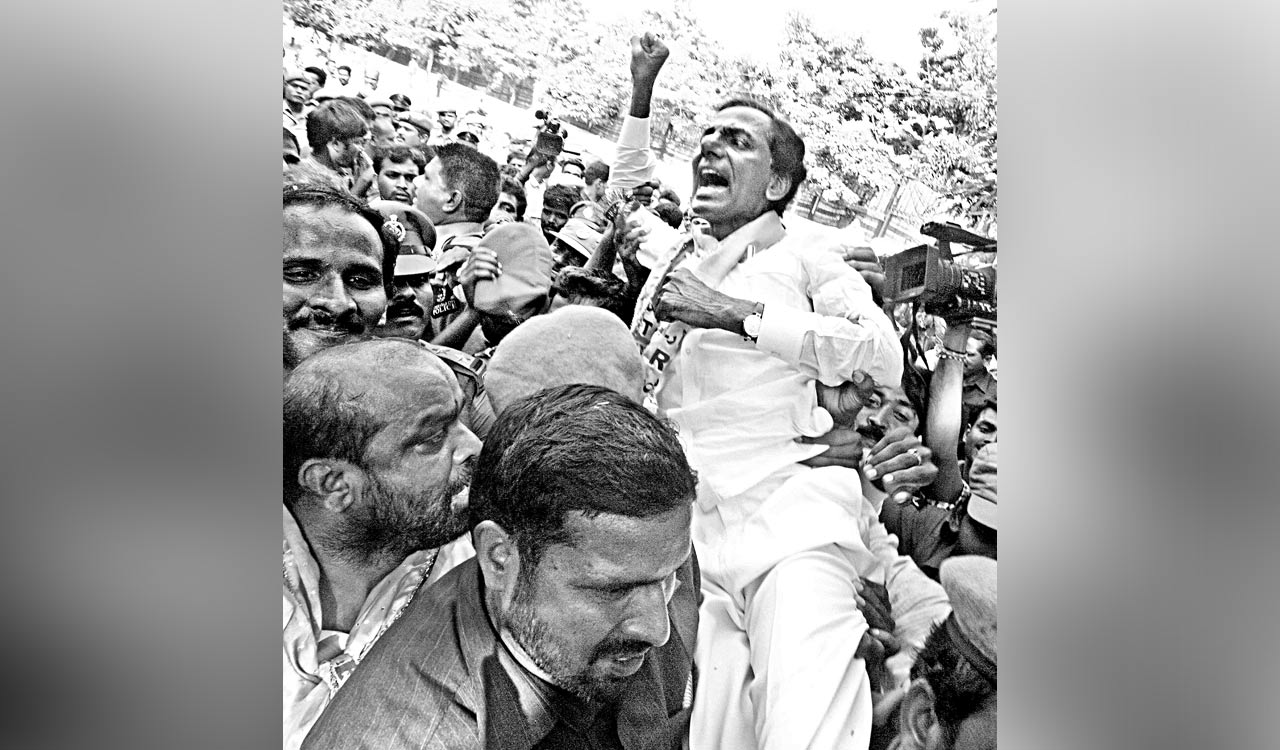On December 9, 2009, when the then Home Minister P Chidambaram announced that the process for a separate Telangana State would be initiated, KCR had almost killed himself by starving to end the 58-year-long misery that the people of Telangana went through
Published Date – 08:00 AM, Wed – 29 November 23

Hyderabad: Resilience, determination and pure grit had become frequent adjectives for K Chandrashekhar Rao as the second phase of the Telangana Statehood movement led by him gained momentum towards the latter half of 2009. However, those very words became synonymous with the name KCR after November 29 that year, when he launched his fast-unto-death agitation to pressurise the Congress-led Central government to grant statehood to Telangana.
The slogan ‘Telangana vachudo KCR sachudo’ (A separate Telangana or KCR dies) reverberated across the region for the next 11 days with the masses taking it up. By 11.30 pm on December 9, when the then Home Minister P Chidambaram announced that the process for a separate Telangana State would be initiated, this 5ft 8inch tall man had almost killed himself by starving to end the 58-year-long misery that the people of Telangana went through.
The ambers for this final assault in the battle for a separate Telangana had started glowing bright two months before that December night, when on October 9, the Supreme Court declared Hyderabad as a free zone, allowing people from across the State (erstwhile Andhra Pradesh) to compete for government jobs. With the declaration snatching away the 70 per cent local area reservation in government jobs in Hyderabad for the people of Telangana, Chandrashekhar Rao had raised his voice, citing the Presidential Order 1975 and GO 610 and insisting that Hyderabad was not a free zone.
The protests against the SC declaration only fuelled the demand for a separate State, and on November 29, Chandrashekhar Rao, who was in Karimnagar at that time, took the decision that would catapult the separate Statehood movement into its final, most intense period. The decision was fast unto death in his hometown of Siddipet.
Police, under the Congress-led State government, arrested him near Karimnagar town on the morning of November 29, as he was on his way to Siddipet. Even as protests broke out, marked by Srikanth Achari’s self-immolation and suicides by several others, cops shifted Chandrashekhar Rao to Warangal and then Khammam, where a magistrate remanded him to judicial custody for 14 days.
But the iron bars in the Khammam Sub Jail did not deter Chandrashekhar Rao, who launched the fast from prison. On December 3, he was shifted to NIMS in Hyderabad, where the fast continued. Elsewhere in the region, the flames of Statehood stoked by Chandrashekhar Rao spread, and agitations, including those by Osmania University students, brought the State to a standstill, prompting the Congress-led Centre to ask Andhra Pradesh Chief Minister K Rosaiah to convene an all-party meeting on December 8. The next day saw Chidambaram’s statement, thus bringing the fast to an end.
The developments in the Seemandhra region saw the Congress-led Centre going back on its word, leading to Chandrashekhar Rao forming the Telangana Political Joint Action Committee (TJAC). The ‘Million March’, ‘Sakala Janula Samme’, ‘Sagara Haram’ and multiple modes of agitation continued, till the Centre was again forced to act by forming the Justice Srikrishna Committee. The rest, as they say, is history.
The fast unto death, observed by the Telangana Rashtra Samithi (now Bharat Rashtra Samithi) as ‘Deeksha Divas’, was, however, the turning point in the entire agitation, a fact acknowledged by Congress leader Jairam Ramesh too in his book ‘Old History and new Geography – Bifurcating Andhra Pradesh’. “The highest echelons of the government had information that ground situation in Hyderabad was grave and ‘something substantial’ had to be done to retrieve it,” he says in the book, going on to add that KCR’s health was one major factor influencing the decision-making.





